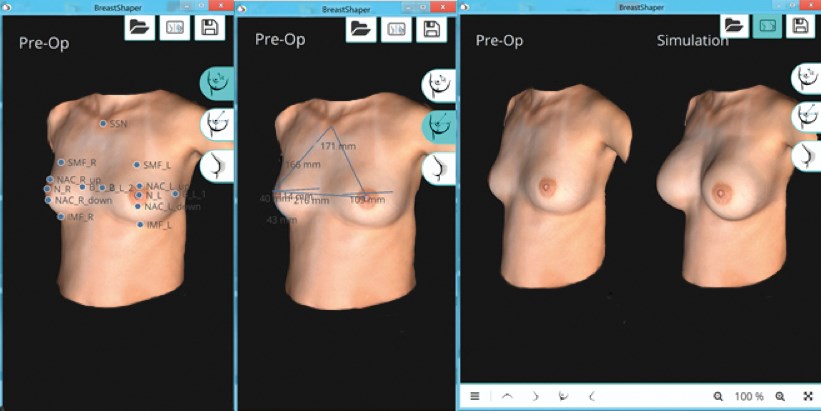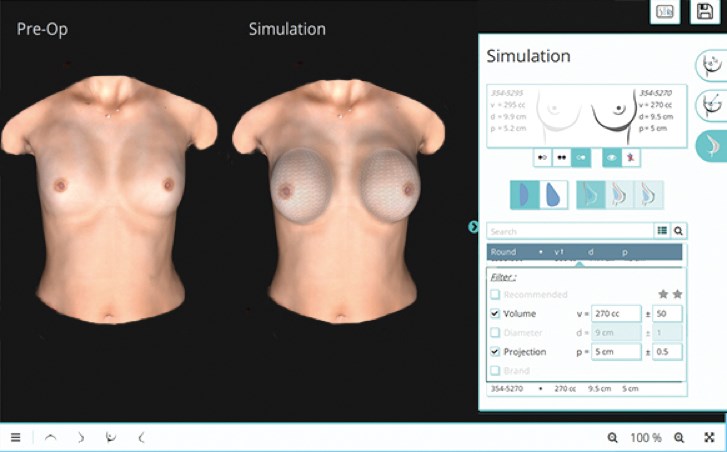Fernando Amato discusses the value of using 3D simulated imaging to help patients make the right decision about their implant size.
Breast augmentation with implants is one of the most widespread plastic surgeries. However, clinicians still have some difficulties and challenges choosing the right implant size for their patients. The definition of the ideal female breast can be different around the world and can change depending on the country, culture, ethnicity and age. So how can you determine the ideal implant size?
First, it’s important to listen to the patient’s wishes, such as their ideas for size, shape, bra size, or shared personal / friend experiences and assess their expectations from the surgery. Next, it is the clinician’s role to present the realistic possibilities. It’s a collaborative decision which should not be left solely to the patient. We must participate and with our experience, we can meet and hopefully surpass the patient expectations.
“3D simulated imaging can help patients not only to decide the implant size but also the height, width, projection and shape”
It is good practice to use some objective measurements in medical records. There is value in showing asymmetries and also in predicting volumes using certain algorithms, but it is still far from the patient’s understanding. How will she decide on implant size?
Current methods such as external sizers, like bra sizers, or simple volume simulation with saline or rice bags under the bra can help the patient better understand their desires and expectation, but are not precise and far from ideal. The surgeon can also use intraoperative sizers but this excludes the patient’s participation.
Recently, with technological advances, it’s possible to create a 3D simulated reconstruction and image of the breast. The 3D image can be captured either with laser scanners or via photographs using one single shot with multiple cameras simultaneously from a fixed station or multiple captures with a single, portable camera. Initially, the complexity and price of such systems limited their use only to industry and research purposes but now due to greater demand, there are some viable options on the market accessible to surgeons.
3D simulated imaging can help patients not only to decide the implant size but also the height, width, projection and shape. The goal is not to promise a definitive result due to the obvious limitations with simulation, such as the influence of gravity, tissue characteristics, and body interaction with the implant. Despite these constraints, 3D simulation provides a viable alternative to the methods which are currently in use.
In our clinic, we use the 3D LifeViz® from Quantificare. The system is comprised of a portable stereovision camera and software BreastShaper module (Figures 1 and 2) which provides the following advantages:
- 3D photo documentation of pre and post operation
- Objective measurements
- Simulation
- Simulation with different implants for asymmetries

Figure 1: (Left to right) Anatomical references, measurements, 3D simulation.

Figure 2: Breast simulation with different implants for asymmetries.
The challenge of delivering good results with aesthetic procedures is always to ensure that the patient’s expectations and surgical outcomes coincide. High re-operation rates for size exchange are unacceptable for breast augmentation but are still a reality. It is important to refine the techniques of the implant choice process and the use of 3D simulated imaging might be a better approach towards such an improvement.
COMMENTS ARE WELCOME




